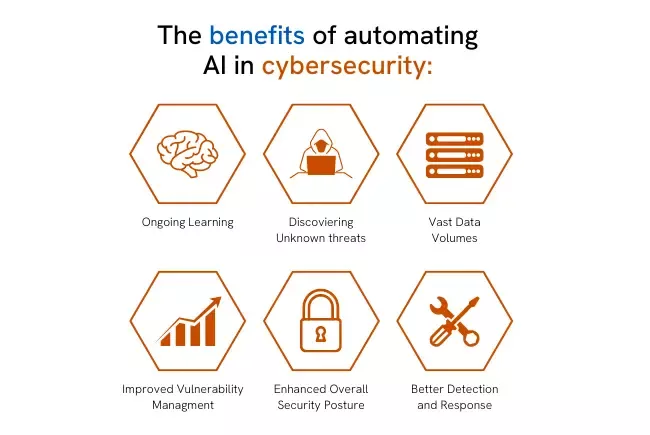Security & Compliance: Why Data is Safer with Revvity Signals Software
Can your organization withstand the financial and repetitional damage of a data breach?
It's a question worth asking because the global average cost of a data breach was USD 4.45 million in 2023. And data breaches are becoming more common and frequent. If your organization manages sensitive data, you need a software provider that meets and exceeds the industry's gold standards for cybersecurity while also complying with your industry's data management standards.
In this post, we'll explore the changing landscape of security and compliance and why your data is safer with Revvity Signals software in place.
But first, let's clarify some terms and concepts.
The Difference Between Security and Compliance
The terms "security" and "compliance" are often used interchangeably, but they're different. Security refers to the big picture of how your organization protects data and systems from cyber threats, while compliance means your organization meets specific security standards.
The distinction is important because compliance alone does not guarantee data security.
Data Security, AI, and Emerging Technologies
Data security is even more critical than ever in the context of emerging technologies like AI, for three main reasons:
- AI-integrated systems handle vast amounts of sensitive data, making security paramount.
- Cybercriminals use AI to launch sophisticated attacks.
- Data breaches can lead to regulatory penalties and damage a company’s reputation.
To address these concerns, organizations are:
- Investing in AI-powered security solutions.
- Incorporating security by design in AI development.
- Adhering to emerging regulations and standards.
- Educating employees about AI security best practices.
At Revvity Signals we use a suite of AI security solutions to leverage:
- Anomaly Detection
- Threat Modeling
- Threat Intelligence Source Feeds
- Indicators of Compromise IOCs
- Data Intrusion Prevention IPS
- Malware identification
- Zero Day Attacks
- Robotic (Bot) attack prevention and Data Classification
A specific example is our Vulnerability Management Platform. Unlike legacy signature-based approaches, the Signals Cloud Detection Response AI-based approach can detect zero-day and new threats in real-time and from a myriad of data points providing a high degree of protection.
As AI grows and additional digital technologies emerge, staying vigilant about data security is essential for harnessing its power safely and securely.
Applying Defense in Depth
Revvity Signals' overall approach to security and compliance is built on the principles of defense in depth.
Defense in depth is an approach to cybersecurity analogous to fortifying a medieval castle — building multiple layers of defense to block a potential attacker at different entry levels.
In cybersecurity, the fortifications occur at data, platform, host, and network levels. Some of those defenses include data encryption, rigorous access controls, continuous monitoring, and proactive threat intelligence.
The goal is to ensure that every potential breach point is securely guarded.
With its origins in military strategy, defense in depth has become the infrastructural framework of choice for creating dynamic, resilient cyber systems that can adapt to new threats as they arise and ensure data protection at every level under all circumstances.
At Revvity Signals, security is a foundational aspect of all our technology. We can safeguard your data through a comprehensive, proactive security strategy by integrating defense in depth into our software-as-a-service (SaaS) solutions.
Here's how we apply defense in-depth principles to the operational aspects of cybersecurity to keep your data safe.
Risk Management
Risks are managed by identifying, assessing, and minimizing potential threats and vulnerabilities at each level – data, platform, host, and network.
We manage risk, in part, by:
- Conducting weekly vulnerability scans to identify potential issues and patch any vulnerabilities.
- Utilizing a continuous risk management program that identifies, assesses, and minimizes the impact of cloud risks that could cause loss, damage, or harm to an internal process, environment, or a customer production environment and its associated data.
When risk management is approached from a defense in depth perspective, customers get robust, comprehensive, and proactive protection for their sensitive data while enabling compliance and continuous security improvement. Multilayered security maximizes the safeguarding of customer information.
Incident Response
Every layer of protection in a cybersecurity system must work together to detect, contain, and recover from security incidents. For example, network security measures can detect and block potential intrusions, while data security measures like encryption and backups can help recover from an incident.
Revvity Signals manages incident response by:
- Employing an Intrusion Prevention Service (IPS) firewall that continuously monitors network traffic for suspicious activity and blocks potential intrusions.
- Using a Web Application Firewall (WAF) to protect web applications by filtering and monitoring HTTP traffic between a web application and the Internet.
- Implementing predefined incident response playbooks that describe the plan of action for all potential cyberattack scenarios, including limiting attack vulnerability, quarantining affected systems, and analyzing, identifying, and remediating the particular security breach.
- Collaborating with a third-party forensic company to enhance the cybersecurity response with deep-dive cyber investigations.
We provide customers with predefined, regularly tested incident response plans, 24/7 monitoring and response capabilities, extended forensic expertise through third-party partnerships, and layered defenses to contain breaches.
Together, these benefits enable rapid, effective incident response to better protect customer data and minimize the impact of potential security incidents.
Auditing
Security measures at each layer of security provide logs and other data points that can be used for auditing purposes. This information helps organizations demonstrate compliance with industry standards and regulations and keeps the data organized and ready to minimize disruption in the event of an audit.
We keep customers audit-ready by:
- Maintaining SOC 2 Type 2 compliance requires extensive auditing of security controls and processes.
- Adhering to ISO27001, the leading international standard focused on information security, which involves regular audits and continuously improving the information security management system.
By applying defense in depth to protect customer data, Revvity Signals helps ensure the integrity, confidentiality, and availability of the information being audited. Conversely auditors can have increased confidence in the security of the data they are reviewing.
Compliance
Implementing technical security controls at each security layer contributes to meeting and exceeding cybersecurity and industry-specific compliance requirements.
Data encryption and access controls help meet data privacy regulations and protect intellectual property (IP), while security standards often require network security measures like firewalls and intrusion detection systems.
Revvity Signals SaaS:
- Ensures compliance with SOC 2 Type 2, ISO27001, and CIS Hardening Standard.
- Employs AES256-bit encryption across the product portfolio for data at rest and in motion.
- Implements role-based access controls and the principle of least privilege for Identity and Access Management (IAM) policies.
Revvity Signals’ customers also gain peace of mind knowing we surpass basic regulatory and industry compliance requirements by:
- seeking third-party verification
- adopting a Zero Trust security model
- classifying data
- providing weekly vulnerability scanning and threat management
Each technical layer of security contributes to meeting the requirements and objectives of the gold standards of cybersecurity, with verification at every step, creating a comprehensive and effective Zero Trust framework.
HR Training
Human resources (HR) training programs can be ideal forums for presenting the proper use and management of technical security controls at each layer of security. For example, employees should be trained on handling sensitive data, using secure authentication methods, and reporting suspicious activities on the network.
Revvity Signals takes HR training for cybersecurity to the next level by:
- Requiring annual Security Awareness Training for every employee.
- Providing role-based Security Awareness courses for employees whose jobs are specifically related to data security and production customer cloud environments.
Revvity Signals: Your Reliable Security Partner
When it comes to choosing a software provider, you need a partner that understands the unique security challenges faced by your industry.

Revvity Signals’ brings you all these benefits through our cloud governance program, continuous risk management, and 24/7 monitoring by a Global Security Operations Center. This demonstrates our deep expertise in protecting data for organizations in pharma, biotech, industrial chemicals, and beyond.
With Revvity Signals SaaS solutions in place, you can focus on your core business with peace of mind, knowing the complexities of data security and compliance are being handled properly and seamlessly in the background.
Learn more about our commitment to security and compliance.

Rick Percuoco
Head of Cloud OperationsRick is the Head of Cloud Operation for Revvity Signals. Rick leads a global team of approximately 40 people and is responsible for CloudOps, SecOps, DevOps, and FinOps for Signals SaaS products. Rick has 10+ years’ experience in Enterprise Cloud platforms, Cloud operations, deployment automation, Cyber Security, Cloud performance and finance cost optimization.
